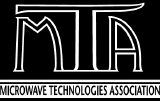Sections:
- What can a Commercial Microwave Oven do and is it Energy Efficient?
- Key factors when buying a Commercial Oven?
- How do microwaves heat food?
- What is meant by the Dielectric Properties?
- Which containers should be used?
- What happens to other materials?
- Why should food be manipulated?
- Why should food be pricked?
- Is microwaved food healthier?
- Why a Commercial Model when Domestic Models are so much cheaper?
|
Unlike a conventional cooker it can be used to defrost, heat and prime cook individual to gastronorm quantities from a frozen, chilled or ambient state. |
|
| As food contains moisture the microwave energy is attracted to it and causes the food molecules to agitate at a very fast rate. This creates heat and food is cooked, thawed or reheated. Microwave energy will penetrate up to 35 - 50mm depending upon its density. |
|
The make up of food or a substance determines how much microwave energy is absorbed, transmitted, reflected and concentrated by it and is called the 'dielectric properties'. Described as the 'loss factor' and 'dielectric constants' this can be calculated for each food substance. A high loss substance such as water and most liquid foods, means that it is a very good absorber of microwave energy. A low loss substance such as foods containing ice and many container materials are poor absorbers of microwave energy. The biggest influence on the even heating of food in a microwave cooker is the food, container shape and material. For this reason, it is important to:
|
| Containers should be of a non-porous material, must not warp or melt and allow the microwave energy to be transmitted to the food. Round or regular shaped containers are generally more suitable as food in those with acute corners tend to overheat and dry out in the corners and edges before it is evenly cooked. Coverings such as microwave cling film are used where there is a need to retain moisture. |
| Microwave energy is reflected by metal and other metallic material and as a result it cannot pass through them. However, the energy can pass through other materials such as glass, china, paper and most plastics. |
|
Like conventional cooking, food should be manipulated to contribute to even cooking and heating. Depending upon the food it should be stirred, turned or re-arranged during the process. With some foods, a standing time is required to complete the cooking process by conduction. |
|
|
|
Foods which have a skin or membrane should be pricked to allow the build up of steam to escape. If this is not done then the food could burst or 'explode' either in the appliance or when removed. Examples of such foods include egg yolks and whites, canned pototoes, potatoes in their skins, tomatoes, apples, kidney and liver. |
|
It depends on the conventional method used but as little or no water or fat is used in the microwave and food cooks very quickly, microwave food is able to retain more vitamins and fat content can be reduced or eliminated. |
|

